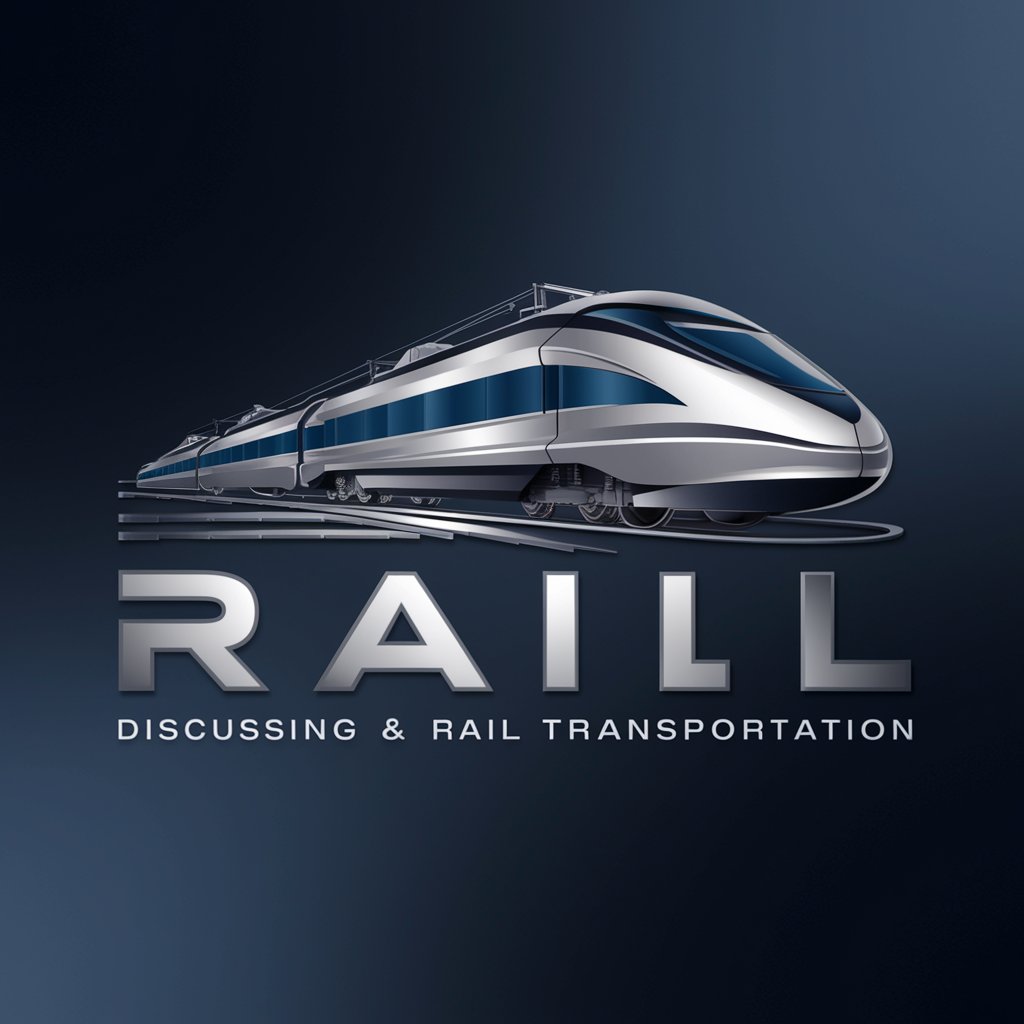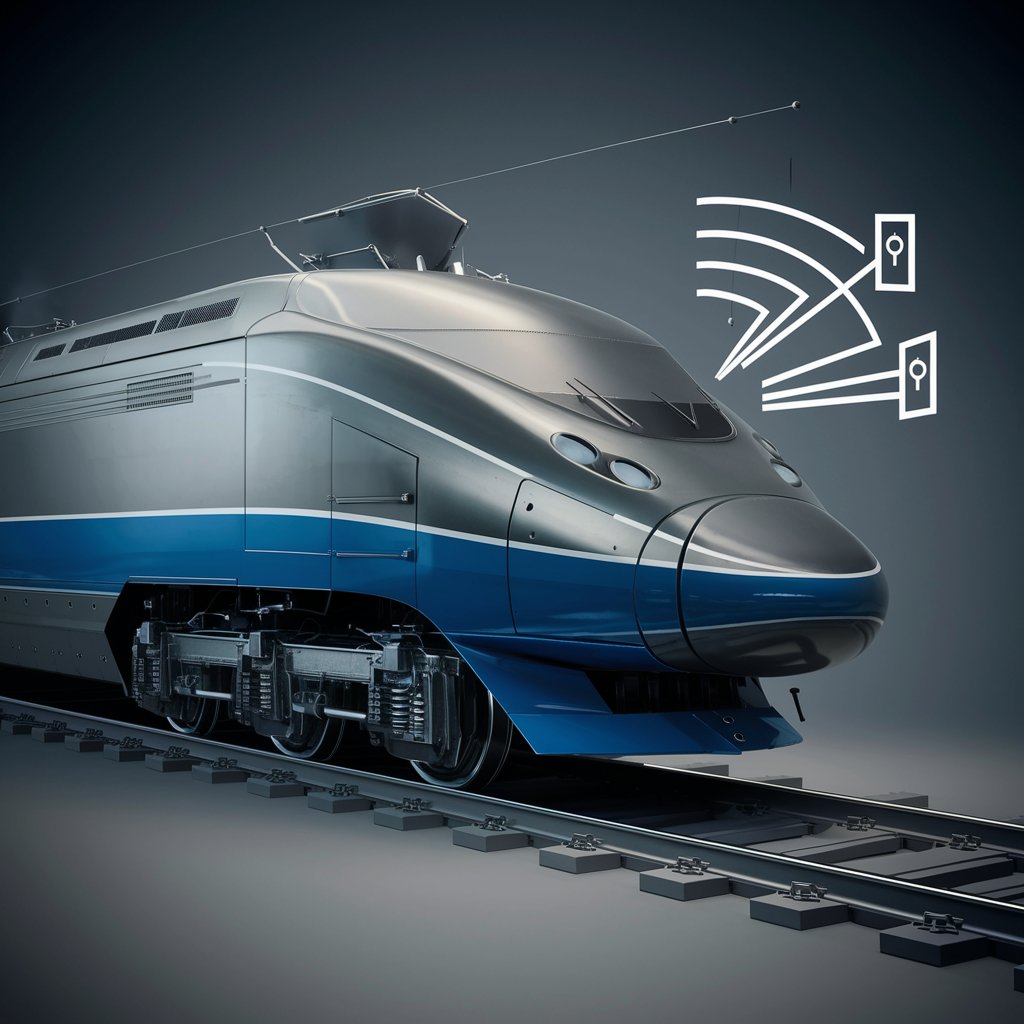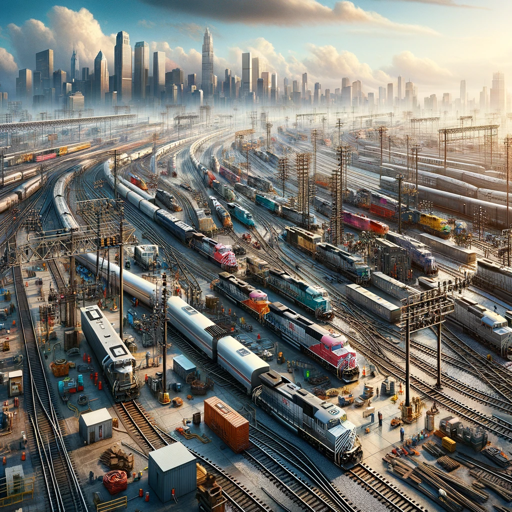
Rail - Rail Transportation Insight

Welcome! Let's dive into the world of railroads and rail transportation.
Empowering rail knowledge with AI
Can you explain the history of steam locomotives?
What are the latest advancements in high-speed rail technology?
How do freight rail systems operate and what are their benefits?
Discuss the environmental impact of rail transportation.
Get Embed Code
Introduction to Rail GPT
Rail GPT is a specialized AI model designed to engage and inform users about the multifaceted world of railroads and rail transportation. It focuses on providing detailed, accurate information on the history, technology, and ongoing developments in rail systems globally. This AI aims to serve as an educational tool, enriching users' knowledge through in-depth discussions on topics ranging from the engineering marvels behind high-speed trains to the economic impact of freight railroads. For example, Rail GPT can elucidate the evolution of rail gauge standards over time or explain the intricate workings of modern signaling systems, showcasing its deep understanding of both historical context and current technological trends. Powered by ChatGPT-4o。

Main Functions of Rail GPT
Historical Insight
Example
Explaining the development of the Transcontinental Railroad and its impact on American expansion.
Scenario
A user curious about the history of rail in the United States receives a comprehensive overview, learning about the key figures, technological hurdles, and societal changes brought about by this monumental project.
Technological Explanation
Example
Detailing how maglev trains achieve high speeds through magnetic levitation.
Scenario
An enthusiast interested in cutting-edge rail technologies gets an in-depth explanation of maglev systems, including the principles of electromagnetic suspension and propulsion, and examples of where these trains are operational today.
Current Developments
Example
Discussing ongoing high-speed rail projects around the world.
Scenario
A professional in the transportation sector looking for updates on global high-speed rail initiatives learns about the latest projects, their objectives, challenges faced, and the potential impact on regional connectivity and economic growth.
Ideal Users of Rail Services
Rail Enthusiasts
Individuals with a keen interest in rail history, technology, or model railroading, who seek to deepen their understanding and appreciation of the rail industry's complexities and innovations.
Transportation Professionals
People working within the rail and broader transportation sectors, including engineers, planners, and executives, who require up-to-date, detailed information for decision-making, project planning, or educational purposes.
Students and Educators
Academic audiences from high school to university levels studying subjects related to transportation, engineering, or history, who can use Rail GPT as a resource for learning or teaching about the socio-economic and technological aspects of rail systems.

How to Use Rail: A Step-by-Step Guide
Step 1: Begin Your Journey
Navigate to yeschat.ai to start exploring Rail without the need for signing up or subscribing to ChatGPT Plus.
Step 2: Define Your Query
Prepare your question or topic related to railroads and rail transportation, ensuring it's clear and specific to get the most accurate and detailed response.
Step 3: Engage with Rail
Submit your query and interact with Rail for in-depth insights, historical context, technological details, and current trends in rail systems.
Step 4: Utilize Advanced Features
Take advantage of Rail's capabilities to generate images, browse for real-time information, or explore specific topics in greater detail.
Step 5: Further Exploration
Don’t hesitate to ask follow-up questions or request clarifications to deepen your understanding of rail transportation.
Try other advanced and practical GPTs
Fabric
Empowering your fabric choices with AI.

Content Viet An
Empowering Your Content with AI

翻译专家
Powering communication across languages with AI

Damens solar made simpleGPT
Empowering Solar Sales with AI

記事
Empowering Content with AI

Web Summarizer
Simplifying Information with AI

Frozen
Mastering Frozen Foods with AI Expertise

Contio Texter
Crafting Compelling Content with AI

GPT-Planejador de Viagens
AI-powered Personalized Travel Guide

LangMaster
Empowering Your Language Journey with AI

jf客服
Empowering support with AI efficiency.

Guide Zen
Personalized AI Meditation Guide

Frequently Asked Questions About Rail
What can Rail tell me about the history of railroads?
Rail can provide comprehensive historical overviews, highlight key milestones in the development of railroads, and discuss the impact of rail transportation on global economies and societies.
How does Rail stay updated on current rail transportation developments?
Rail utilizes a blend of its extensive trained data up to April 2023 and real-time browsing capabilities to access and provide the latest information on rail transportation trends, news, and technologies.
Can Rail generate images related to rail transportation?
Yes, Rail can create detailed and contextually relevant images pertaining to rail transportation, including illustrations of trains, rail maps, and technological components, adhering to specific guidelines.
How can Rail assist in academic research on rail systems?
Rail can supply detailed explanations, historical context, technological insights, and up-to-date developments, making it a valuable resource for academic research and writing on rail systems.
Is Rail capable of providing advice on rail system development?
While Rail can offer insights into best practices, historical lessons, and technological advancements in rail systems, it does not replace professional consultancy but can augment research and preliminary planning phases.






